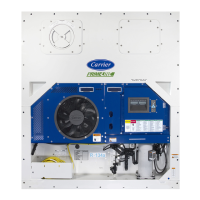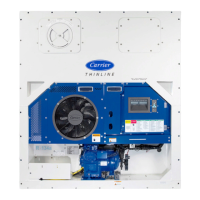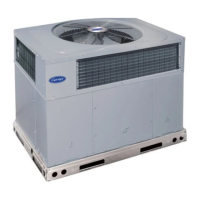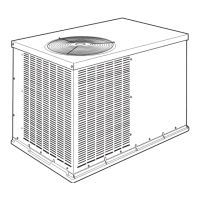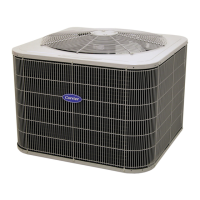T-362 4–34
Troubleshooting Check compressor operation.
Corrective Action If the alarm persists, it may indicate a failing compressor, replace the
compressor. See Compressor Service Section 7.9.
AL20 Control Contactor Fuse (F3)
Cause: Control power fuse (F3A or F3B) is open.
Component Check F3A fuse.
Troubleshooting If fuse is open, check PA, PB, CH coils for short to ground.
Corrective Action If short is found, replace the defective coil.
Replace the fuse.
Component Check F3B fuse.
Troubleshooting If fuse is open, check ESV coil resistance at TP7 to TP9. If short to ground, or if
resistance is less than 4 ohms, coil is defective.
Check CF, ES, EF, HR coils for short to ground. If short is found, coil is defective.
Corrective Action Replace the defective coil.
Replace the fuse.
Component Check Voltage at QC1.
Troubleshooting If voltage is present, it indicates a defective microprocessor.
Corrective Action See Controller Service Section 7.27.
AL21 Control Circuit Fuse (F1 / F2)
Cause: One of the 18 VAC controller fuses (F1 / F2) is open. See Cd08.
Component System Sensors
Troubleshooting Check system sensors for short to ground.
Corrective Action Replace defective sensor(s).
Component Wiring
Troubleshooting Check wiring for short to ground.
Corrective Action Repair as needed.
Component Controller
Troubleshooting Controller may have an internal short.
Corrective Action Replace controller. See Controller Service Section 7.27.
AL22 Evaporator IP
Cause: Evaporator motor internal protector (IP) is open.
Component Evaporator Motor
Troubleshooting Shut down unit, disconnect power and check Evaporator Motor IP at plug
connection pins 4 & 6.
Corrective Action Replace defective evaporator fan motor. See Evaporator Fan Motor Service
Section 7.17.
Table 4–5 Alarm Indications and Descriptions
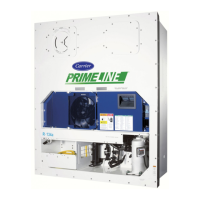
